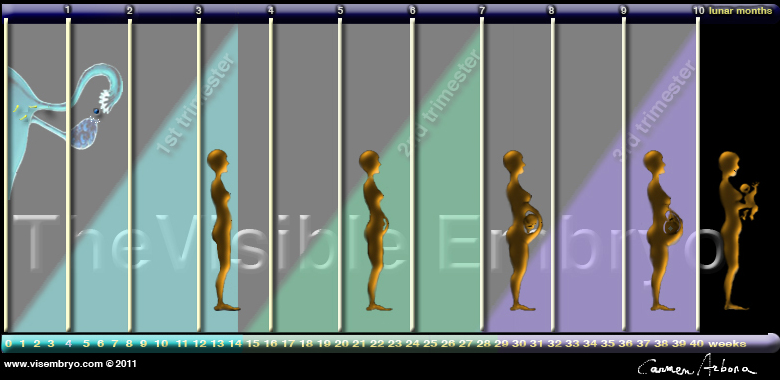|

Click weeks 0 - 40 and follow fetal growth
|
|||||||||||||||||||||||||||||||||||||||||
|
|
||||||||||||||||||||||||||||||||||||||||||
|
Expectant Fathers Need Prenatal Care and Support Found: New Gene That Causes Intellectual Disability May 12, 2011--------News Archive Cryopreserved Umbilical Cord Blood Same As Fresh High Pregnancy BPA Results In Infant Abnormalities May 11, 2011--------News Archive 15 Eggs Perfect Number To Achieve Birth After IVF Depression Treated Well In Moms Benefits Her Kids May 10, 2011--------News Archive Scientists Reveal Nerve Cells' Navigation System Stem Cell Technology Used In Unique Surgery May 9, 2011--------News Archive Mayo Clinic Turns Zebrafish Genes Off and On Autism in South Korea Estimated at 1 in 38 Children
|
The success of the work eliminates the necessity of performing cell isolation procedures prior to their use in clinical transplantation. The study is now freely available on-line. "Umbilical cord blood (UCB) has been recognized as an enriched source of endothelial progenitor cells (EPCs) with potential therapeutic use," said Dr. Juan M. Melero-Martin of the Department of Cardiac Surgery, Children's Hospital Boston and the Harvard Medical School and the study's corresponding author. "Cryopreservation is the only reliable method for long-term storage of UCB cells, and clinical application of EPCs depends on our ability to acquire them from frozen samples." Until this study, successful EPC isolation from fresh mononuclear cells (MNCs) had become routine, although isolating EPCs from mononuclear cells derived from cryopreserved UCBs had not previously been reported. "In addition to obtaining phenotypically similar EPCs by following the methodology described in our paper, we also obtained similar numbers of EPC colonies, regardless of whether the MNCs were freshly obtained or cryopreserved," added Dr. Melero-Martin. The researchers also reported that the EPCs they obtained from cryopreserved UCB-derived MNCs also had blood vessel forming properties. "This study shows that cryopreservation does not appear to affect UCBs in their ability to act as a source of EPCs," said Dr. Paul Sanberg, coeditor-in-chief of CELL TRANSPLANTATION and executive director of the University of South Florida Center of Excellence for Aging and Brain Repair. "This provides hope that the long term storage of these cells will not affect their ability to act as a reservoir of other potentially beneficial cell types." Contact: Dr. Juan M. Melero-Martin, Department of Cardiac Surgery, Children's Hospital Boston, Harvard Medical School, 300 Longwood Ave., Enders 1228, Boston, MA, 02115. Citation: Lin, R-Z.; Dreyzin, A.; Aamodt, K.; Dudley, A. C.; Melero-Martin, J. M. Functional endothelial progenitor cells from cryopreserved umbilical cord blood. Cell Transplantation 20(4):515-522; 2011. The editorial offices for CELL TRANSPLANTATION are at the Center of Excellence for Aging and Brain Repair, College of Medicine, the University of South Florida and the Diabetes Research Institute, University of Miami Miller School of Medicine. Contact, David Eve, PhD. at celltransplantation@gmail.com or Camillo Ricordi, MD at ricordi@miami.edu
| |||||||||||||||||||||||||||||||||||||||||